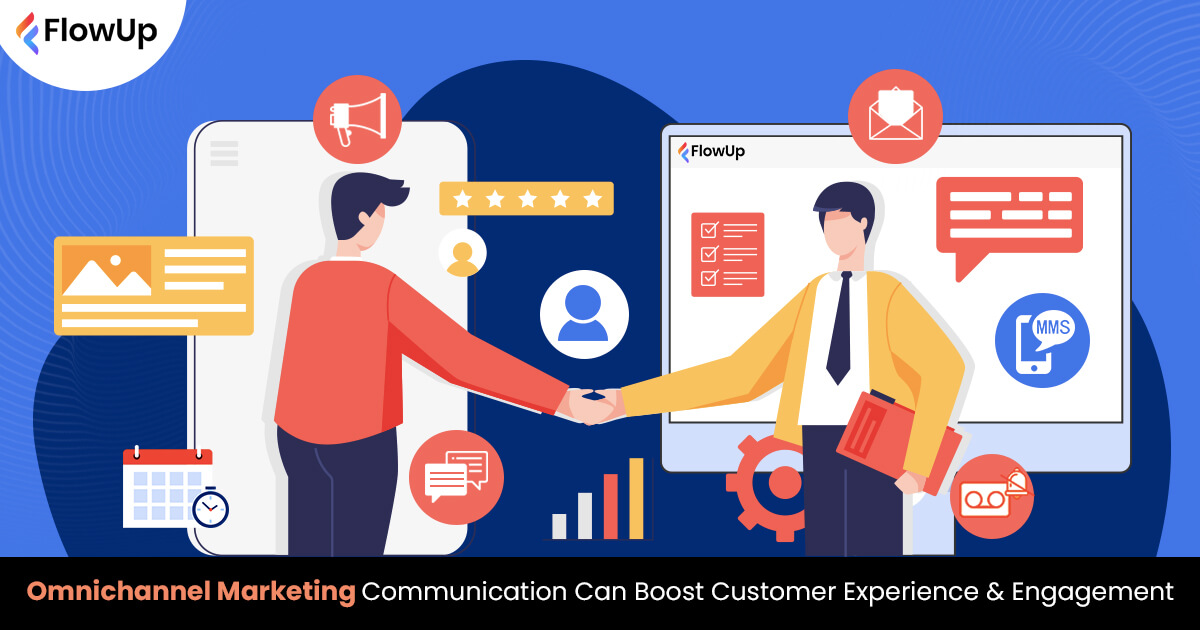In today’s competitive market, customers have a growing number of alternatives for virtually everything they need. If your brand must stand out from the crowd, you need to pay attention to your customer experience. Customer experience sums up the interactions of a customer with your business throughout the buyer journey and the impression the customer gets in the process.
A good customer experience easily turns a potential customer into a happy and satisfied customer, and then into a loyal customer. On the contrary, poor customer experience leaves your customers with a bad impression about your brand and this can significantly increase your customer churn rate.
To boost your customer experience, you need to ensure that your customers get an enjoyable experience, consistent with all your business touchpoints. That’s where omnichannel marketing communication comes into play. In this article, you’ll learn how you can improve your customer experience and engagement by implementing the omnichannel communication strategy.
What is Omnichannel Marketing?
Customers communicate with brands across a variety of channels, which are all flawlessly integrated through omnichannel marketing. Together, each channel helps your business develop a consistent message, voice, and brand. A more uniform user experience is produced as a result of this strategy.
Why is Effective Communication Important For Customer Experience?
Marketing is all about getting your products and services to the right audience. Effective communication gets you in touch with your customers’ needs, expectations, and challenges. The marketing team can use this information to direct marketing and close market gaps.
For example, if a recent market trend points toward a new product in the market. Effective communication with customers gives you insight into the competitive advantages of the company to make adjustments in production and marketing. This means that you can know what line of products to promote at a particular time and when to launch new products or improve existing ones.
Whenever production and marketing activities are customer-centric, the outcome is often customer satisfaction. In addition, strategic marketing efforts based on accurate data help you achieve operational management. It eliminates waste both in terms of costs and manpower; you avoid promoting a product at the wrong time.
How Can Omnichannel Marketing Communication Boost Customer Experience and Engagement?
Omnichannel marketing communication adopts a customer-centric perspective to marketing. In other words, it seeks to make buyers have a delightful experience all through their buying process. Omnichannel marketing communication boosts customer experience and engagement in these ways:
#1. Engage Customers via Their Preferred Channel
Not all your potential buyers are active on social media or familiar with a website interface to locate a customer service hotline. Omnichannel marketing communication engages customers across all marketing channels for convenient buying.
It counters the one-size-fits-all marketing strategy that adopts two or more channels to engage customers holistically.
Omnichannel marketing makes it easy for customers to locate brands both online and offline and goes a step further to integrate these channels to create a seamless experience for the buyer.
#2. Consistent Information Across Multiple Channels
A deep customer-brand relationship is a key driver of customer loyalty. Omnichannel marketing targets an equal customer experience across all marketing channels. It ensures that all parties – both internal and external – are creating content that aligns with brand tone and at the same time, is relevant to your audience.
In other words, omnichannel marketing communication uses a consistent message and brand image to create an increased feeling of connection. By building a closer relationship with your customers you get them to be loyal to your brand. This way, it’s easier to get feedback from them.
#3. Automate Your Communication
Omnichannel marketing communications use tools and solutions to connect with customers and gather their views. This eliminates the inconsistencies of using a manual approach – time-wasting and less reach.
Imagine trying to run a personalized marketing campaign using a manual approach. First, you’ll have to organize data to segment your customers depending on relevant points such as buyer persona, life cycle stage, a past purchase, loyalty status, and more.
This process alone is tedious, but omnichannel marketing communication leverages automation tools to make this marketing activity seamless.
#4 Smart Opt-in and Opt-out Management
The use of automation in omnichannel marketing all points toward a cohesive and little or no effort buyer journey. With this marketing strategy, customers can easily opt-in and opt-in; subscribe, or unsubscribe. It should be as easy to opt out as it is to opt in. Omnichannel marketing makes sure that this is possible to give customers a pleasant experience.
#5. Easy Customer Feedback
Customer feedback helps you to concentrate on what’s important to your customers right now. Omnichannel marketing strategy builds a solid and reliable customer feedback system where businesses can get each customer’s views irrespective of whatever platform they are buying from.
#6. Enhanced Sales Enablement Tactics
Marketers employ omnichannel to maintain consistency in the customer experience, but omnichannel refers to more than just marketing. An omnichannel strategy is also necessary to provide continuity throughout your sales channels, particularly in the context of sales enablement.
Conclusion
Regardless of the channel or method a customer chooses to utilize, the experience should be seamless. The omnichannel marketing communication leverages a united front to drive customer experience across various channels. By providing a seamless user experience, customers are more committed to your brand. Keep in mind that heightened customer experience and engagements go a long way to boost revenue too.

